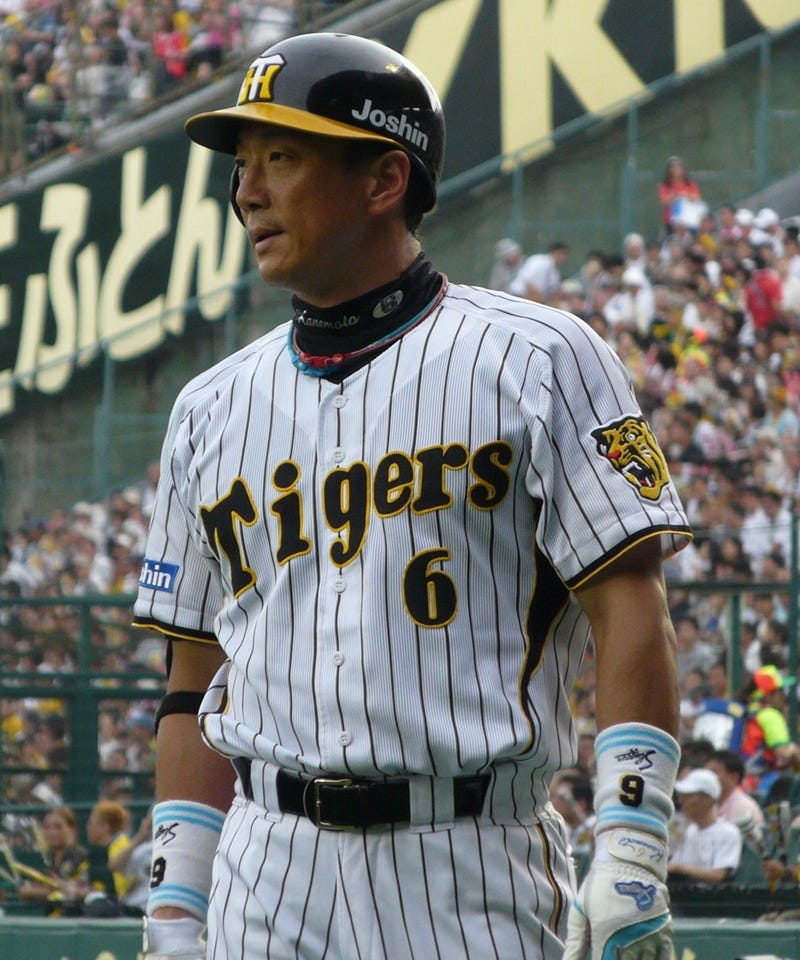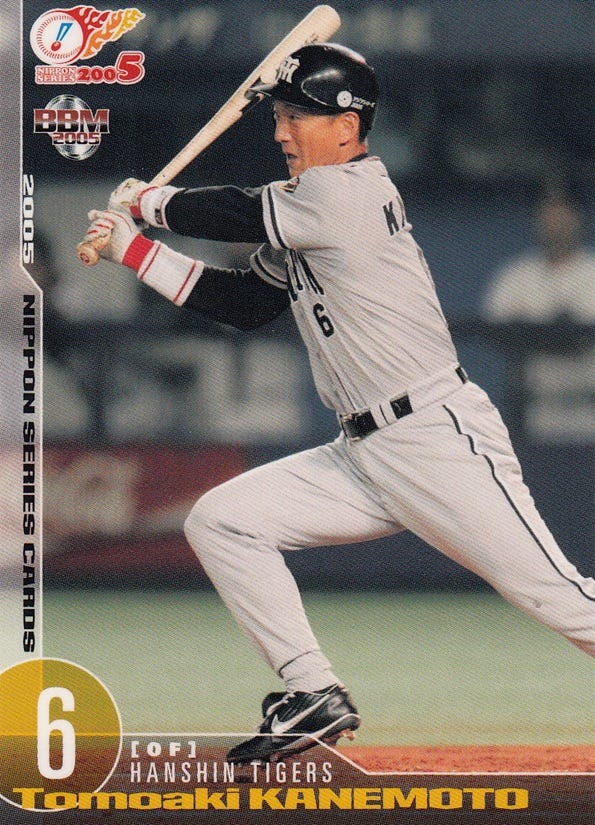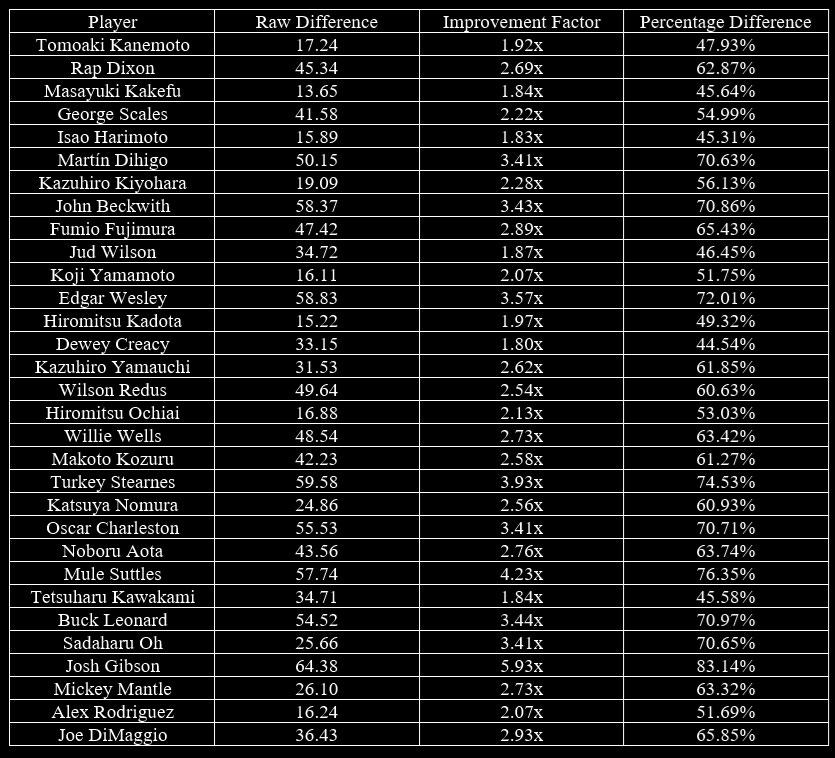Tomoaki Kanemoto: A-Rod's Japanese Counterpart?
The Power Hitter Pantheon: Baseball’s Greatest Home Run Heroes
This project aims to determine the greatest home run hitter of all time by comparing each slugger’s statistics to the average of their era using three formulas. The final adjusted stats will then be used to compare them head-to-head with other all-time greats.
If you find this content valuable and would like to support the ongoing studies and articles, your contributions via CashApp are truly appreciated.
Your support helps fund the tools, research, and time dedicated to these projects. Every contribution, no matter the size, plays an important role in keeping this work going.
If you're unable to contribute financially, sharing this article on your social media (X, Facebook, etc.), emailing it to a friend, or texting the link to a fellow baseball fan is just as valuable.
Thank you for your support!
Tomoaki Kanemoto will be the next legendary Japanese League slugger examined in this study. For a brief biography of Kanemoto, please click here.
According to Baseball Reference, Kanemoto’s official statistics reveal a total of 476 home runs over 8,915 at-bats resulting in an average of at-bats per home run 18.73 (AB/HR).
Tomoaki Kanemoto played in Japan’s Central League (JPCL) from 1992-2012. When aggregating the statistics from each of the seasons Kanemoto competed in, the league totals include 586,619 at-bats and 16,309 home runs, resulting in an average of 35.97 at-bats per home run (AB/HR).
With this data, we can evaluate how Kanemoto’s performance compared to the average Japanese League hitter of his era.
Raw Difference: 17.24
Formula: League Average – Player Career AverageImprovement Factor: 1.92x
Formula: League Average / Player Career AveragePercentage Difference: 47.93%
Formula: (League Average – Player Career Average) / League Average × 100%
AB/HR:
This means Kanemoto hit a home run roughly every 18.73 at-bats, a strong indicator of his power-hitting ability. The average player in the league during this period needed nearly twice as many at-bats (35.97) to hit a home run, suggesting a lower frequency of power hitting across the league.
Raw Difference:
Kanemoto outperformed the league average by 17.24 at-bats per home run, a significant gap that highlights his superior efficiency in hitting home runs.
Improvement Factor:
Kanemoto was almost twice (1.92x) as effective as the average player at hitting home runs, needing only about half the at-bats to achieve the same result.
Percentage Difference:
This shows that Kanemoto’s AB/HR was 47.93% better than the league average, reinforcing his status as an elite slugger.
Tomoaki Kanemoto’s career stats reveal him to be an exceptional power hitter in Japan’s Central League from 1992 to 2012. With a 1.92x improvement factor, Kanemoto was essentially twice as productive in terms of home run frequency, a rare feat that cements his reputation as a legendary slugger.
In our initial analysis, we examined the careers of Mickey Mantle, Alex Rodriguez, and Joe DiMaggio using our formulas. Following that, we also evaluated the careers of Josh Gibson, Sadaharu Oh, Buck Leonard, Tetsuharu Kawakami, Mule Suttles, Noboru Aota, Oscar Charleston, Katsuya Nomura, Turkey Stearnes, Makoto Kozuru, Willie Wells, Hiromitsu Ochiai, Wilson Redus, Kazuhiro Yamauchi, Dewey Creacy, Hiromitsu Kadota, Edgar Wesley, Koji Yamamoto, Jud Wilson, Fumio Fujimura, John Beckwith, Kazuhiro Kiyohara, Martín Dihigo, Isao Harimoto, George Scales, Masayuki Kakefu, and Rap Dixon.
Now, let's compare Kanemoto’s career statistics against these baseball legends to gain a clearer perspective on how he stacks up.
Kanemoto’s stats place him in an intriguing tier of power hitters—where Raw Differences range from roughly 13 to 20, Improvement Factors hover around 1.8x to 2.1x, and Percentage Differences fall between 45% and 53%.
This group includes Masayuki Kakefu, Isao Harimoto, Koji Yamamoto, Hiromitsu Kadota, Hiromitsu Ochiai, and Alex Rodriguez—legends in their own right who mirror Kanemoto’s excellence.
Raw Difference:
Kanemoto’s 17.24 sits comfortably among Kakefu (13.65), Harimoto (15.89), Yamamoto (16.11), Kadota (15.22), Ochiai (16.88), and Rodriguez (16.24). This metric reflects how many fewer at-bats per home run he needed compared to his league’s average, and Kanemoto shines here as a consistent power threat. He edges out Kakefu and Rodriguez while aligning closely with Yamamoto and Ochiai, showcasing his ability to deliver home runs with remarkable efficiency.
Improvement Factor:
Kanemoto’s 1.92x means he was nearly twice as effective as the average hitter in his era, a feat echoed by Kadota (1.97x), Yamamoto (2.07x), Ochiai (2.13x), and Rodriguez (2.07x). He’s just a hair below the 2x threshold—a mark of elite sluggers—yet outpaces Kakefu (1.84x) and Harimoto (1.83x).
Percentage Difference:
At 47.93%, Kanemoto’s relative improvement over his league average is neck-and-neck with Kakefu (45.64%), Harimoto (45.31%), Jud Wilson (46.45%), Kadota (49.32%), Yamamoto (51.75%), Ochiai (53.03%), and Rodriguez (51.69%). This tight clustering highlights how Kanemoto was a dominant force, improving on the norm by nearly half, a testament to his skill and adaptability in Japan’s Central League.
Tomoaki Kanemoto emerges as a towering figure in this analysis, a slugger whose 17.24 Raw Difference, 1.92x Improvement Factor, and 47.93% Percentage Difference cement him as a legend among legends.
When measured against players in his statistical orbit—icons like Masayuki Kakefu, Isao Harimoto, Koji Yamamoto, Hiromitsu Kadota, Hiromitsu Ochiai, and Alex Rodriguez—Kanemoto not only holds his ground but often shines brighter.
His efficiency, consistency, and sheer power made him a standout in Japan’s Central League, delivering home runs with a frequency that rivaled the best of his peers. Kanemoto’s story is one of understated dominance, a player who blended raw strength with remarkable reliability to carve out a legacy that resonates both locally and globally.









